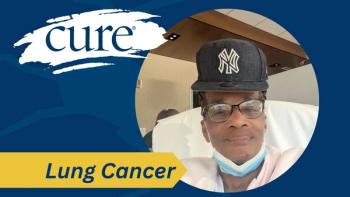
Drawing Was a ‘Creative Reprieve’ During My Wife’s Cancer
Drawing helped me stay grounded while my wife was going through cancer treatment.
I’m just an artist. That’s really all I ever wanted to be. So how did I end up writing a cancer-related blog for CURE®?
Cancer, of course. Hereditary breast cancer caused by a BRCA2 mutation to be exact — a preventable cancer. (
So that’s why I’m here. I want to share a thought or two that will hopefully be helpful for someone with cancer and/or the caregivers who love them.
Cancer not only took away my beloved wife and muse, being a cancer caregiver also took away my whimsical imagination. For over 35 years, I was a freelancer creating illustrations for children’s books, magazines and paper products. Whimsy was always a part of my art. You know, silly cartoons, fluffy animals, happy kids, sunny skies and the like. But as my wife’s cancer progressed my whimsical imagination withered. The sunny skies turned dark and scary.
To try and help me remain grounded during my wife’s cancer struggles, I often turned to my sketchbook when time allowed. None of the art I created during stressful moments while I was caring for my wife is a masterpiece. And none of it will ever hang in a gallery or museum, but doing it helped me cope with the stress and heartache of being a cancer caregiver.
Now, in a series of blogs, I’d like to share some ideas that hopefully might give anyone dealing with the unpleasantness of cancer a creative reprieve.
But please keep in mind that I’m not an art therapist. I’m just an illustrator that has done a boatload of artwork and other stuff over a long professional career. And I have found that doing art just for art’s sake to be helpful and calming during times of stress.
When my wife had her first chemo port implanted, I nervously stood in the waiting room holding my sketchbook and staring out the window watching the birds land in the trees that lined the road below. That inspired some doodles while I waited.
Thinking of that, let’s get started…
All you need is a piece of paper and a pencil. If you have some colored pencils or markers to enhance your sketch, that’s a bonus, but not necessary. Drawing with a black pencil alone can be quite expressive and satisfying.
But don’t stop there. Add whatever you feel the image needs to complete the picture. That might be more feathers, more leaves, clouds, etc. Or maybe just add color.
But if you don’t feel up to drawing the bird, just a hard scribble can feel very satisfying. (I had many days during my wife’s cancer struggles where that’s all I felt like doing.)




